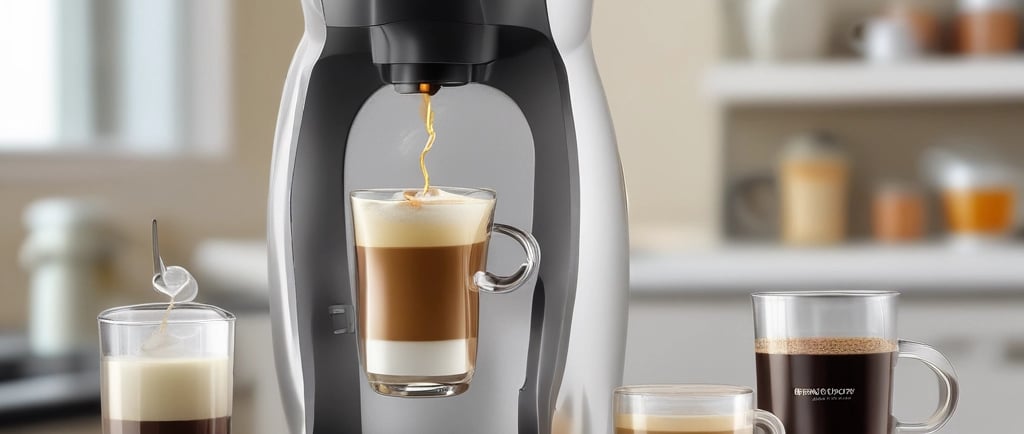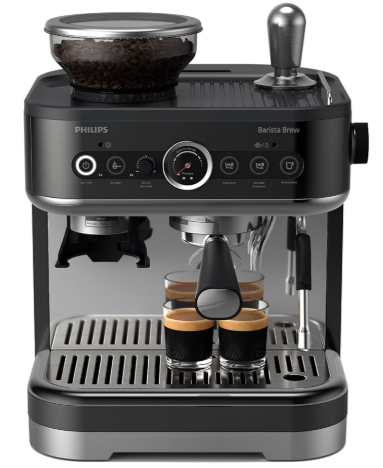Espresso at Home: Comparing Manual Espresso Makers for Beginners
METHODS
10/4/20255 min read


Introduction to Espresso Making at Home
In recent years, the trend of making espresso at home has gained significant traction, particularly among coffee enthusiasts and those exploring their culinary skills. The allure of crafting a perfect cup of espresso is both appealing and rewarding, not to mention the convenience it offers in today’s fast-paced lifestyle. Home espresso making not only equips individuals with the skills to create barista-quality coffee but can also lead to substantial savings over time when compared to frequently purchasing specialty drinks from cafés.
A well-made espresso is defined by its rich flavor, velvety crema, and a well-balanced profile. Understanding the nuances of espresso—such as the grind size, dose, and temperature—can significantly enhance the coffee experience. Furthermore, having an espresso maker at home allows individuals to experiment with different beans and brewing techniques to achieve their desired taste, fostering a unique coffee journey tailored to personal preferences.
When it comes to choosing an espresso machine, potential buyers often face the decision between manual and automatic options. Manual espresso machines require a hands-on approach, giving users complete control over the brewing process. This level of engagement is particularly suitable for beginners eager to understand each facet of espresso preparation, from tamping to water flow. On the other hand, automatic machines offer convenience and consistency at the expense of some customization. For those new to espresso making, the tactile experience of a manual machine not only enhances the learning curve but also cultivates appreciation for the craft.
In conclusion, embracing the art of making espresso at home is a fulfilling endeavor for coffee lovers and novices alike. By opting for a manual espresso maker, beginners can unlock the full spectrum of flavors and techniques, establishing a solid foundation for their coffee-making skills. This journey is set to be both enriching and enjoyable, transforming ordinary coffee moments into extraordinary experiences.
Features to Look for in Manual Espresso Makers
When selecting a manual espresso maker, beginners should consider several key features that can significantly impact their espresso-making experience. First and foremost, the build quality is essential. A robust espresso maker constructed from durable materials will not only withstand daily use but also ensure consistent performance over time. Stainless steel components, for instance, offer longevity while delivering a professional aesthetic.
Size and portability are additional factors to assess. Some beginners may prefer compact machines that fit easily on kitchen counters or can be transported for travel. Stovetop models tend to be more portable, making them suitable for individuals who wish to enjoy espresso on the go. Others may find that a larger lever machine provides stability during the brewing process, allowing for greater control over each shot.
Equally important is the ease of use. A beginner-friendly manual espresso maker should strike a balance between offering control over the brewing process while remaining straightforward. Features such as clear instructions, intuitive mechanisms, and manageable pressure levels contribute to a more enjoyable experience. Pressure capability itself is crucial, as achieving the perfect extraction necessitates sufficient pressure to force water through the coffee grounds. Machines that can sustain around 9 bars of pressure are recommended for optimal results.
Lastly, having a goal of achieving the 'perfect shot' is paramount in the espresso-making journey. Understanding the differences between various types of manual machines, such as lever machines and stovetop models, can guide beginners in choosing a device that aligns with their aspirations. Lever machines typically allow for more control over pressure and extraction time, which can lead to a richer espresso, while stovetop models offer simplicity and accessibility. Ultimately, identifying the right features will facilitate a rewarding and pleasurable experience in crafting exquisite espresso at home.
Comparative Review of Popular Manual Espresso Makers
When exploring the world of manual espresso makers, beginners are often faced with a multitude of options, each claiming to deliver the best espresso experience. In this review, we will focus on some of the most popular manual espresso makers, considering usability, price point, and overall performance. This careful examination is essential to help first-time users choose the right machine that aligns with their needs.
One standout in this category is the Aeropress. Renowned for its compact design and simplicity, the Aeropress is perfect for beginners. It utilizes air pressure to extract rich flavors from coffee grounds, resulting in a smooth and robust espresso-like coffee. With a price point below $30, it encourages experimentation. However, its limited capacity and the need for a separate grinder may deter some users seeking a more all-inclusive system.
Another popular option is the Staresso manual espresso maker, praised for its versatility. The Staresso can produce espresso as well as other coffee beverages and features a built-in milk frother. Priced around $60, it remains affordable while offering a good range of functionality. However, users may find that consistent pressure is necessary for optimal extraction, which may require some practice. Maintenance is straightforward, requiring simple rinsing after use.
Finally, the Rok EspressoGC sets itself apart with its unique mechanical design. With a price point near $200, it is more of an investment but is noted for its durable build and ability to create a rich crema. The Rok encourages users to master the technique of espresso making, providing a hands-on experience. Its larger footprint is a consideration for those short on counter space, yet many enthusiasts appreciate the engagement it offers.
Ultimately, the choice of a manual espresso maker depends on individual preferences and brewing styles. Understanding the pros and cons of each model allows beginners to make informed decisions while embarking on their espresso journey.
Tips for Getting Started with Manual Espresso Making
Embarking on the journey of making espresso at home can be both exciting and daunting, especially for beginners. To ensure success, focusing on a few essential aspects of the espresso-making process is key. First and foremost, selecting the right coffee beans is crucial. Look for specialty coffee beans that are grown in reputable regions like Ethiopia, Colombia, or Brazil, known for their rich and diverse flavor profiles. Opting for freshly roasted beans will enhance the overall quality of your espresso.
The next critical step is understanding grinding techniques. A consistent grind size is paramount for a balanced extraction. For espresso, a finer grind is generally recommended, as it allows for optimal extraction during brewing. Invest in a good quality burr grinder, which produces uniform coffee grounds, ensuring that the flavors are extracted evenly. Regularly checking the grind size and making adjustments based on the coffee bean type and roast level will help you refine your technique.
Tamping methods also play an essential role in the espresso-making process. When tamping, it is important to apply consistent pressure to create a uniform coffee puck. Aim for about 30 pounds of pressure, ensuring that the surface is even and level. This step is crucial as it influences water flow through the coffee grounds during extraction, ultimately affecting the taste of your espresso.
Timing is another vital aspect to consider. A standard espresso shot typically requires about 25 to 30 seconds of extraction time. Monitoring this timing closely will help you achieve the desired flavor and body of your espresso. As you grow more comfortable, keep experimenting with various brewing parameters.
To further enhance your skills, seek out resources such as online tutorials, coffee community forums, and books dedicated to espresso. Engaging with fellow coffee enthusiasts can provide valuable insights and tips to improve your espresso-making techniques and enrich your understanding of this art form.
One of our favorite coffee makers....
PHILIPS Barista Brew Semi Automatic Espresso Machine


About this item
Brew like a barista: The Philips Barista Brew Espresso Machine empowers coffee enthusiasts to create barista-quality brews with tools like the 58mm portafilter and single & dual walled filter baskets.
Integrated guidance: Enjoy intuitive guidance for crafting every cup, ensuring a rich aroma and satisfying espresso experience with the premium calibrated tamper & countertop-safe tamping system.
Elevate your coffee experience: Enjoy a 250g bean container that ensures freshness of your beans.
Upgrade your milk frothing experience: Elevate your milk frothing experience effortlessly with the 450ml stainless steel milk jug and powerful steam wand.
Choose your ideal brew: experience convenience with the Americano button and integrated hot water outlet, or choose a single or double espresso.
Click 'Shop Now' to find on Amazon...
Why the PHILIPS Barista Brew Semi-Automatic Espresso Machine one of our favorites...
The PHILIPS Barista Brew Semi Automatic Espresso Machine is more than just a coffee maker—it's a daily dose of barista-level bliss in our own kitchen. It’s quickly become one of our favorite machines, and here's why.
First, let’s talk about consistency. This machine delivers rich, velvety espresso shots with the perfect crema—every single time. Whether you're pulling a single or a double, the semi-automatic design gives you control without being overly complicated, making it ideal for both beginners and seasoned home baristas.
The built-in steam wand is another major win. It creates creamy, café-quality microfoam for lattes, cappuccinos, and flat whites. It heats up quickly and gives you just the right amount of power to texture milk exactly how you like it.
